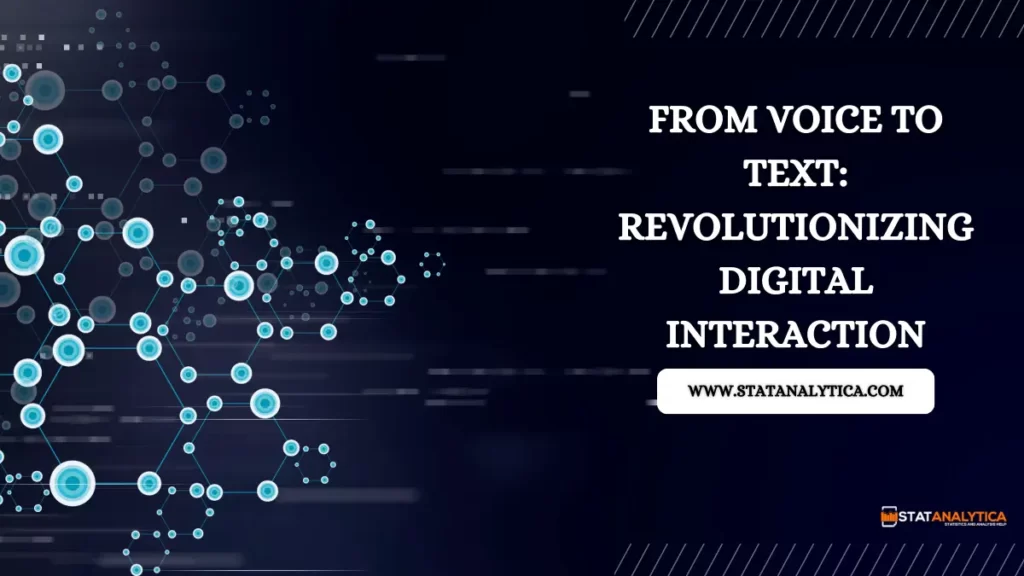We live in the age of voice assistants, virtual reality, and augmented reality. But, as groundbreaking as these technologies are, there are still some challenges that need to be overcome before they can be truly effective. From the technical side of things, developers must figure out how to make these tools more responsive to human input and behavior. On a more fundamental level though: How do we interact with devices in the first place? In this article, we will explore how voice input is emerging as a key channel for user interaction and why it’s important to consider text-based interfaces when developing new products or services.
From Voice to Text: The Evolution of Digital Interaction
Table of Contents
We have all experienced the evolution of digital interaction, from voice to text. It has been a slow but steady process. From the first text message in 1992 to today’s Siri, Alexa, and Google Assistant we are now able to communicate with our devices using natural language rather than having to rely on buttons or menus.
This transition was made possible thanks to advances in artificial intelligence (AI). The technology behind this shift was initially used by academics and researchers who wanted their computers or robots to understand human language as closely as possible so they could interact naturally with people without relying on pre-programmed responses or commands like “open door.”
Now we’re seeing these same techniques being applied commercially by companies like Amazon and Microsoft so they can create AI assistants that respond quickly when spoken commands are given over phone lines instead of typed into smartphone screens with fingers alone; however, this isn’t just about making things easier for consumers either!
The Rise of Text-Based Communication
The rise of text-based communication is a direct result of the rise of the internet, social media, and mobile devices. Additionally, services like Portuguese transcription services have played a role in making text-based content more accessible to a global audience.
The advent of the internet in general has made it easier than ever before for people to connect with one another online. Social media platforms like Facebook and Twitter allow users from around the world to interact virtually on a daily basis through status updates, comments, likes and shares; these interactions can be as simple as “hello” or “goodbye” but often evolve into more complex conversations about politics or current events.
The popularity of these platforms has also led to an increase in other forms of digital communication such as instant messaging apps (e-mail), video chats via Skype or FaceTime, etc., all of which work together seamlessly thanks to advancements in technology over time – though they’re still not perfect yet!
Multilingual and Cross-Cultural Communication
If you’re a business, voice to text technology is an essential tool for connecting with your customers. With the ability to translate and transcribe audio into text in real-time, businesses can easily provide multilingual and cross-cultural communication services for their employees or customers. This means that any company that wants to expand internationally can reach new markets without having to hire translators or spend time translating documents manually.
For individuals who speak multiple languages but don’t have time for tutoring sessions, voice recognition software offers an affordable alternative: instant translation from one language into another! Whether you’re learning Spanish for work or simply trying out your Italian skills on vacation, voice recognition software makes it easy to understand native speakers without needing them around all day long (or even at all).
Voice-to-Text Technology
The voice to text technology is used in various sectors. It is alternatively referred to as automatic speech recognition (ASR). The main purpose of this type of technology is to convert spoken words into text that can be read by computers.
In the financial sector, for example, people use their mobile phones or landlines to make payments using their credit cards or debit cards. In the healthcare sector, doctors use computers with built-in microphones so they can dictate patient records which are then stored in an electronic database system called Electronic Medical Record (EMR).
In the education sector teachers record lectures using audio recording devices such as digital camcorders while students listen through headphones connected to them through Bluetooth technology or wireless internet connection; later they upload them onto a YouTube channel where anyone can access them anywhere around the world at any time during day or night without having any access restrictions whatsoever!
Voice-to-Text in Various Sectors
- Healthcare
- Education
- Transportation
Voice-to-text technology is being used in a variety of sectors. In the healthcare industry, voice-activated software can help doctors and nurses manage their workloads by allowing them to save time typing patient information into electronic health records (EHRs). This also allows for more accurate record-keeping because there’s less room for error when speaking rather than typing on a keyboard or touchscreen device.
In education, voice assistants like Alexa are being used as learning tools. For example, they can provide students with study guides or help teachers create lesson plans based on student needs and interests. When it comes to transportation services like ride-sharing apps Uber or Lyft, voice assistants allow passengers who don’t have smartphones to access their services through their own devices, such as wearables, instead of needing smartphones themselves!
Voice-to-text technology is the next step in digital communication. It allows us to engage in conversations with machines and computers, making them more human-like. Voice input has been around since the 1960s but it wasn’t until recently that we were able to take advantage of this technology thanks to advances in artificial intelligence (AI). Nowadays, there are many different ways that voice input can be used: from translating languages into text or speech recognition software for smartphones or other smart devices!
Also Read: 13+ Amazing Big Data Applications in Ecommerce (Updated 2023)


